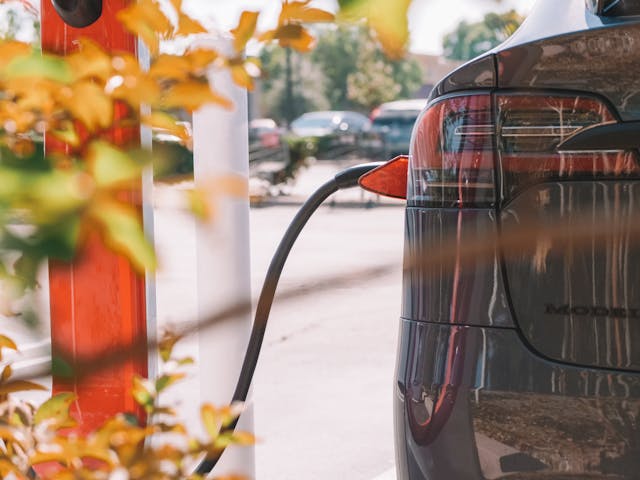

The head of the Disease Control Division of Brunei's Ministry of Health, Justin Wong, has publicized the country's plan to vaccinate 70 percent of its population through three phases by the end of 2021. Brunei's officials took the measure in the hope of reaching immunization coverage that would eventually lead to a herding community.
Bersama Melindungi Negara Kitani Project Trajectory
Source: unsplash
The first phase will provide the vaccination to front-liners directly handling COVID-19 patients' recovery and those deemed high-risk individuals, such as senior citizens with existing diseases. The dedicated COVID-19 Vaccine Technical Committee that comprises doctors, scientists, and members of the pharmacy will be responsible for the process of risk-assessments for the citizen before the first phase begins.
Wong estimated phase two to start in the third quarter of the year at the latest and will prioritize essential workers and individuals with moderate risks.
The third phase will be available for the public in the late third quarter of 2021.
The limited supply of the vaccine greatly affected the immunization distribution; it is impossible to provide simultaneous vaccination to everyone. Most countries do not have a sufficient supply of vaccines to inoculate their entire population in 2021. Therefore, the most exposed individuals will be the focus of this implementation. However, Brunei's vision remains as optimistic as ever as they practice tremendous planning towards doing this project.
'Bersama Melindungi Negara Kitani' project has recently announced the first five candidates of the COVID-19 vaccine for the country on March 12, 2021. The government has also nominated a few candidates for the vaccine supplier, namely Pfizer BioNTech, Moderna, AstraZeneca, Sinopharm, and Johnson and Johnson. Each of which has its specific dose and interval regulation.
Brunei's residents and citizens with valid ICs will receive the vaccination for free and book the vaccination appointment online.
The initial phase of the vaccination will be taking the Oxford-AstraZeneca, by which the supply would cover 20 percent of the population of Brunei.
Brunei's government's approach is highly ambitious, considering by March 4, 2021, Brunei's ministry of health has accounted for merely three active cases of Covid-19 throughout the country. The country has also been very rigid in terms of independent isolation, as currently, there have been 13.995 cases of separate isolation and 600 tests account per day.
The recovery from the COVID-19 pandemic will become the critical turnover to support Brunei's economic outlook to expand by 2.8 percent in 2021, improving the 0.7 percent growth in 2020. The forecast's primary orientation will be the mining and manufacturing sectors' export level as the commodity prices recover. While other sectors also need to rebound, travel and tourism are less likely to recover shortly.
Brunei's rapid immunization project aims to survive from the weaker-than-expected global growth and unanticipated disruptions. Brunei seeks to sustain public health to support households and firms to revitalize growth and job, eventually strengthening the fiscal position and accelerating financial reforms to seize new growth opportunities.

Digital Lending in Southeast Asia: Current Trends and Future Outlook
Digital lending in Southeast Asia (SEA) has been on an upward trajectory, significantly enhancing financial access for both individuals and businesses. The region's high internet and mobile penetration rates have facilitated this growth, enabling more people to access financial services conveniently. Governments across SEA are actively promoting digital lending as a means to improve financial inclusion, particularly for the underbanked and unbanked populations. For instance, digital lenders in countries like Indonesia and the Philippines have capitalized on the surge in internet usage to offer innovative lending solutions.

The Latest Trends and Developments in SEA’s Digital Payments Landscape
The adoption of digital payments in Southeast Asia (SEA) has accelerated, driven by technological advancements, government initiatives, and changing consumer behaviors. It has evolved from simple online transactions to sophisticated financial ecosystems that include various payment methods such as mobile wallets, QR code payments, and Buy Now Pay Later (BNPL) options.

Navigating the Digital Era: Future Jobs and Skills in the Age of Digitalization
The job market's transformation driven by digitalization highlights the need to understand emerging trends and acquire essential skills for thriving.

Navigating Key Challenges in Southeast Asia’s EV Market
Southeast Asia (SEA) finds itself at a crucial juncture in the journey towards electric vehicle (EV) production and adoption as the world transitions towards sustainable transportation solutions. The region has several significant keys for developing the EV industry, such as Indonesia's nickel supply and Thailand's EV manufacturing potential. However, the ASEAN EV industry faces many challenges and threats that must be overcome to ensure success in the region.